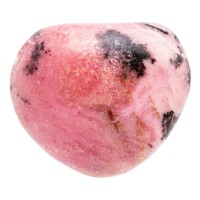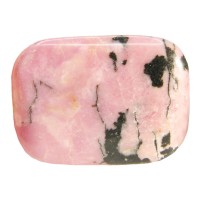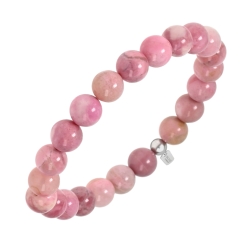Rhodonite - knowledge base, jewelry
Properties of rhodonite, physiological effects, zodiac signs and rhodonite jewelry.










Rhodonite is a manganese inosilicate
Manganese lends a pink or reddish tinge to these minerals. Rhodonite contains a combination of the calcium and iron minerals. Rhodonite is often found along with black manganese oxide. The sparkle of rhodonite is glassy, less commonly beaded. Manganese is often replaced by iron, magnesium, calcium and zinc.
Chemical and physical properties of rhodonite:
Formula:
(Mn2+Fe2+Mg,Ca)SiO3
Crystal system:
triclinic
Category:
silicate
Color:
pink, brownish red, red, grey and yellow
Streak:
white
Transparency:
transparent, translucent
Cleavage:
perfect
Fracture:
uneven, conchoidal
Mohs scale hardeness:
5,5 – 6,5
Specific gravity:
3,57 – 3,76 g/cm³
Major metaphysical healing properties attributed to rhodonite:
Wound healer, even removes old scars, stimulates circulation, cures autoimmune diseases, cell regenerating, reduces arthritis, repair of auditory organs, treatment of emphysema, gastric ulcer, bone growth, recharges, heart chakra, dyslexia.
A part of our rhodonite jewelry offer. Click on the images for more details!
For more jewelry please click here!
Use of rhodonite
High quality rhodonite crystals come at a high price. Beautiful pure pink or red ones are used as ornamental stones or pearls. It is typically used to make cabochons, beads, statuettes. Rare beautifully shaped and pure minerals are loved by collectors. Good quality damaged crystals are usually cut into gemstones. Because of their low hardness, they are too fragile for jewelry, so these are also more likely to be purchased by collectors.
Occurrence of rhodonite
Argentina, Australia, Brazil, Canada, England, India, Peru, Russia, Swedish, USA- North- Carolina, Colorado, New Yersey, Massachusetts.






